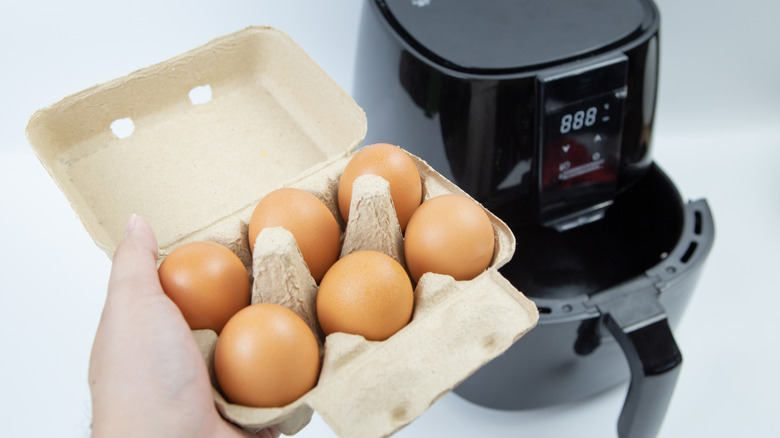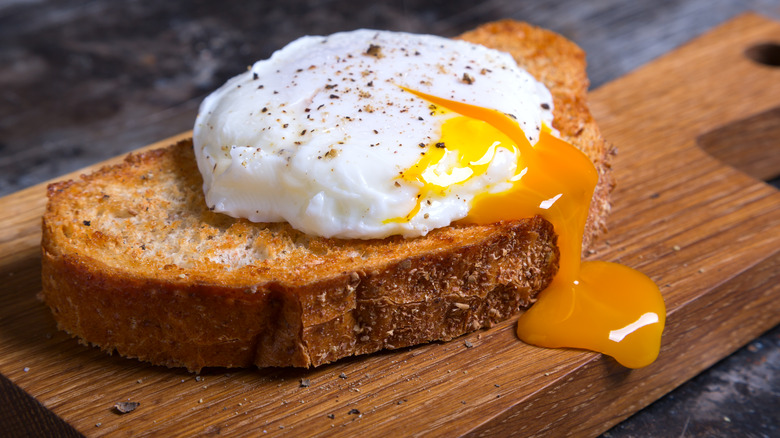The 2 Big Mistakes You Should Avoid When Poaching Eggs In The Air Fryer
While you may have made air fryer hard-boiled eggs before without issue, chances are you might not even know the countertop appliance can help you achieve perfect poached eggs, a dish many home cooks are too intimidated to even try making. There are countless ways to poach eggs (we've even ranked 20 methods to help you out), and the air fryer is a great option, provided that you avoid certain pitfalls.
Nelson Serrano-Bahri, chef and director of innovation at the American Egg Board, reveals to Mashed the two big errors that people commit when using the air fryer for poaching eggs — not choosing the right container and not adding water. The first mistake is easy to overlook, since many recipes involve just tossing eggs into the air fryer basket in their shells. Poached eggs are a little different. "I recommend using a silicone egg poaching cup, which is non-stick and easy for releasing the egg once done, or a small ramekin," says Serrano-Bahri. Depending on the size of your air fryer, this might require you to make multiple batches of poached eggs.
Before you get cooking, you need a bit of liquid. "Make sure to add a small amount of water to the bottom of the air fryer basket and in the vessel to slightly cover the egg," recommends Serrano-Bahri. "Once ready, place the silicone cup or ramekin with the egg inside the basket. Water creates steam, which mimics the poaching process done using a pan."
Tips for best results
Yes, with the air fryer method, you don't need to master the water-swirling technique as you would when preparing them on the stovetop, but the poaching process does still require a bit of liquid in order to obtain that sought-after poached texture. You also want to be careful to follow Nelson Serrano-Bahri's recommendation, precisely, and ensure the water is indeed in the air fryer basket and not where it could potentially get into contact with electrical components.
Don't overestimate the amount needed — a mere 1 or 2 tablespoons of water should do the trick. Avoid pouring in large quantities, even if you're poaching multiple eggs at once, as you're not supposed to be mimicking the set-up you would have on the stovetop.
Serrano-Bahri suggests a temperature of 350 degrees Fahrenheit and a cook time of five to six minutes for perfect poached eggs. You may want to adjust that based on preference, as some favor runny poached eggs while others like them to be a bit more set. The one thing to always be mindful of, as Serrano-Bahri notes, is that "to ensure food safety, eggs should always be cooked to 160 degrees Fahrenheit." An instant-read thermometer will give you that information, but a gentle poke of the egg whites should also clue you in as to whether or not they're adequately set.

